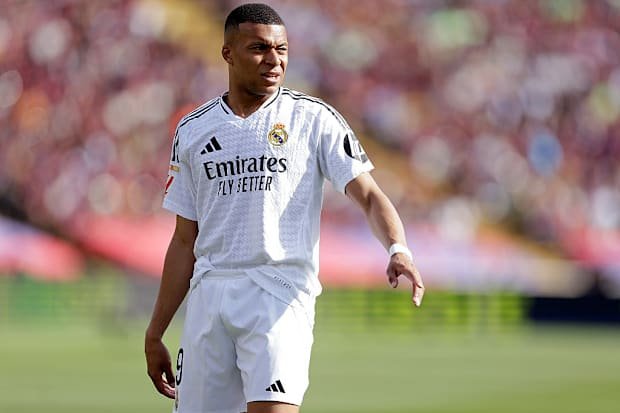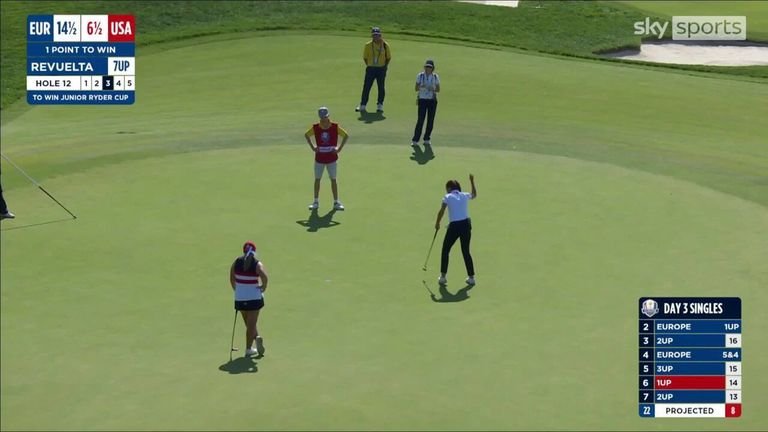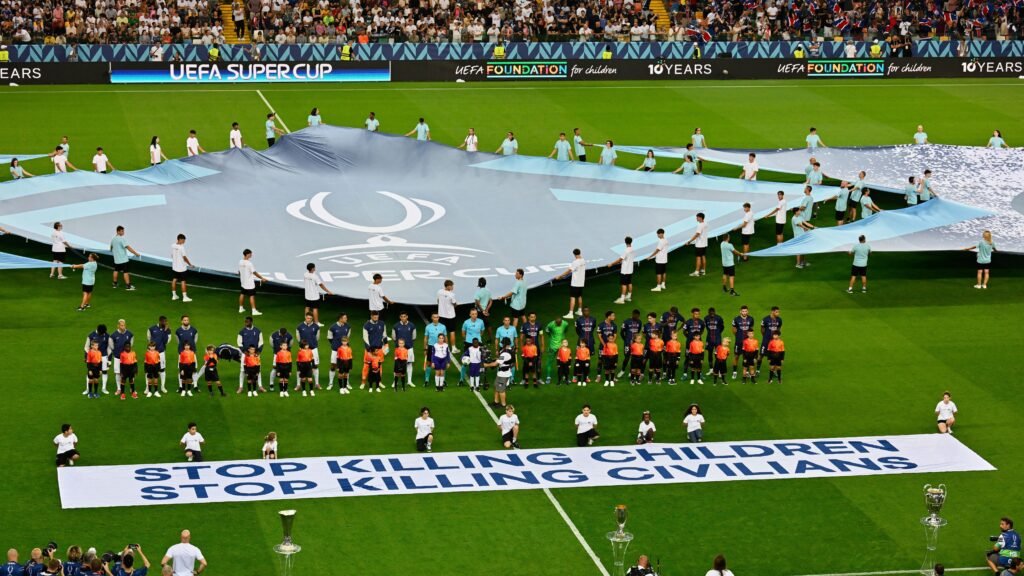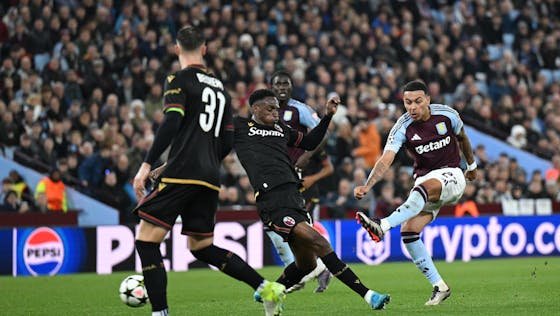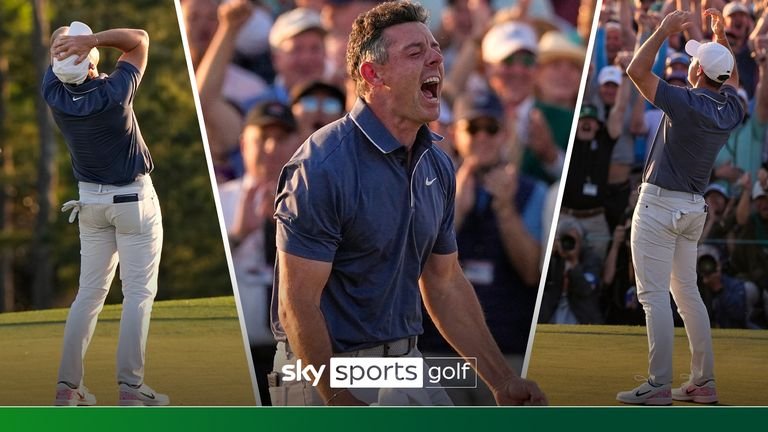Welcome to the sixth edition of The Alternative Premier League Table, where each Thursday, Anantaajith Raghuraman analyses the entire division through a specific lens.
After looking at each club’s time spent leading games last week, this time our qualifier is how the 20 teams use long balls.
As usual, the article that follows is long but detailed, so please settle down and enjoy it all — or search for the side you want to read about.
Long balls dwindled in both number and reputation after the Pep Guardiola era began at Manchester City in 2016. They came to be viewed as a relic of a bygone era, a desperate tactic involving little-to-no finesse, and the preserve of football management’s strategic dinosaurs.
But the end of last season and the early weeks of this one have shown that long balls are enjoying a tactical renaissance in the Premier League.
Roughly 10 per cent of all open-play passes across the league over the current campaign’s first month have been long (defined as those covering 32+ metres or 35+ yards), building from the nine per cent of 2024-25.
The attention paid to sides’ out-of-possession structures is growing, intending to limit space for the opponents across the pitch, often by using man-marking. But long balls bypass those restrictions. Also, when used in tandem with baiting the opposition into moving forward, they generate transition situations from sequences of organised possession, but teams can still maintain a settled defensive line if the move is broken up.
The principle is largely uniform, but as with any metric, teams have shown variety.
This week’s Alternative Table is ranked by each club’s share of long balls from their total open-play passes in 2024-25 and 2025-26. Given we are only five weeks into the season, some of what you read may be trends, while others could revert to the mean with time.
Key takeaways include:
- Everton are the biggest exponents, closely followed by Bournemouth and Burnley.
- No team has created more chances from long balls than Manchester United’s six. In contrast, Everton, West Ham United, Sunderland, Wolverhampton Wanderers and Fulham are yet to carve out even one from these situations.
- Manchester City rank last, with only an eight per cent long-ball share. Also in the bottom five are Chelsea, Arsenal and Liverpool, but there is more to this than meets the eye…
Manchester City played 47 long balls in Sunday’s 1-1 draw away to Arsenal, a game they ended with five defenders on the pitch but no striker. It is a total that City have eclipsed only four times since the start of last season, with one of those being the 3-0 home win against Manchester United a week earlier (55 long balls).
New goalkeeper Gianluigi Donnarumma’s deadline-day arrival at the start of this month was the next stage of City’s gradual movement towards playing over the press rather than trying to pick through the opposition, necessitated further by losing key midfielder Rodri to a knee injury for much of the 2024-25 season. Ederson, City’s No 1 goalkeeper for years until the signing of Donnarumma, picked up four assists with direct passes to their front line last season, most notably for an Erling Haaland goal in a 3-1 home win against Chelsea in January — a game in which Guardiola’s men attempted 55 long balls.
Eight per cent of City’s total open-play passes have been long to start this season, more than in any campaign since 2018-19. The sample size is a reason for that inflated number but their long-ball share over the final five games of 2024-25 was seven per cent, enough to hint that it might be an active strategy.

Gianluigi Donnarumma prepares to go long against Arsenal (Alex Pantling/Getty Images)
Manchester United have become one of the league’s major proponents of long balls since Ruben Amorim was named head coach last November. They rank first in total long balls completed (133), successful open-play switches (20) and chances created from long balls (six) after the season’s first five matches, and in the weekend’s 2-1 home win against Chelsea, it was an accurate direct pass to Benjamin Sesko that led to Robert Sanchez’s early red card.
Searching balls towards their attacking midfielders and wing-backs have been a consistent feature of United’s play. Bryan Mbeumo has been the recipient of four of their six chances created, the best of which was the shot below against Burnley.

The other two have gone to Matheus Cunha and Patrick Dorgu. Cunha forced a good save from Fulham goalkeeper Bernd Leno after hauling down an Altay Bayindir long ball, and Dorgu hit the post with a low drive against Arsenal.
United’s concern has been consistently creating quality chances when teams are wise to the long-ball ploy. The direct approach also leaves their midfielders and central defenders needing to cover large spaces.
Everton rank first in share of long balls at 14 per cent. That figure is consistent with the previous two seasons (15 per cent), but there’s a difference in terms of chance creation: Everton made 36 of these from open-play long balls across 2023-24 and 2024-25, but have not generated any this season.
Yet their start has been a positive one, partly because they have added better ball-carrying to their ranks. With new signings Jack Grealish and Kiernan Dewsbury-Hall joining Iliman Ndiaye, across the five matches, David Moyes’ men have averaged 13.8 one-on-one carries per 90 minutes, a significant improvement on the 8.7 per 90 across 2023-24 and 2024-25.
Everton have more avenues to attack with the ball at their feet. They have managed four key passes following a one-on-one, having recorded nine in the 38 league fixtures of last season.

Jordan Pickford is rarely afraid to go long (Michael Regan/Getty Images)
Burnley are not far behind in long-ball share. Scott Parker’s promoted side are aware of the quality gap within the Premier League, and their fixture list has been unforgiving, with games against Tottenham Hotspur, Manchester United and Liverpool already. They have averaged the least possession (34 per cent) and have defended deep, which has necessitated going long to give them time to reorganise.
The strategy has paid off at times, with four chances created from these passes (only behind Manchester United). Left-back Quilindschy Hartman, winger Jaidon Anthony and striker Lyle Foster have been reliable receivers of out-balls. It’s all a marked difference to two seasons ago, when Vincent Kompany’s promoted side eschewed going long and took only four points from their opening 13 league games en route to getting relegated straight back to the Championship.
West Ham rank joint-third for open-play switches completed with 12, but many of these have come in their own defensive third. Further up the pitch, they have looked confused, and the lack of late runs into the box from midfield makes it difficult to create chances from cutbacks, which was a strength of head coach Graham Potter’s Brighton & Hove Albion teams. It has contributed to intense early-season scrutiny on Potter.
Brentford have similarly struggled to forge an identity up front in the first five games of new head coach Keith Andrews’ tenure. They have created 3.8 open-play chances per 90, the worst rate in the league. Mbeumo’s departure to Old Trafford increased the pressure on Mikkel Damsgaard, operating as their sole creator. Brentford have relied more on long balls, 12 per cent of their total passes.
Andrews has reverted to using a strike duo of Igor Thiago and Kevin Schade, mimicking Brentford’s early seasons in the Premier League with Ivan Toney and Mbeumo. Thiago drags defenders out of position to compete for long balls, with Schade running in behind in pursuit of flick-ons and passes over the top. His goal below against Chelsea from a Jordan Henderson pass is a good example.
⚽️ Scored by Kevin Schade
🅰️ Made by Jordan Henderson pic.twitter.com/hPNvY9RyoX— Brentford FC (@BrentfordFC) September 14, 2025
Wolves are bottom of the actual Premier League table with five defeats out of five and three goals scored. They have gone long with 12 per cent of their open-play passes, a higher rate than in any of their five most recent seasons.
A variety of personnel-related reasons have been at play.
Andre, who was crucial to getting them past the first line of pressure, has made a disappointing start to the campaign. Higher up the pitch, new signings Jhon Arias and Fer Lopez are still settling in, leaving head coach Vitor Pereira with no established dribblers following Cunha’s summer exit. Wolves have averaged 21.6 carries of 10 or more yards per 90 across the five matches, a lower number than in any completed season since 2018-19 and down from the 26.7 of 2024-25.
Arsenal are the league’s most accurate team from long balls, with a 55 per cent completion rate. Their share of eight per cent is a slight increase from the seven per cent they averaged between 2021-22 and 2023-24. Mikel Arteta’s side have played more direct football in the big games to avoid conceding possession in their own third. Last weekend, they were initially stifled by City’s high press before Eberechi Eze’s introduction from the bench at half-time.
Their squad is built to maximise those moments of directness, too. Goalkeeper David Raya’s distribution is excellent, while Kai Havertz boasts great hold-up play. Gabriel Martinelli and Bukayo Saka offer pace in behind. Summer signing Viktor Gyokeres is a willing channel-runner, and his goal against Leeds United shows the value in using him as a long-ball target.
Viktor Gyökeres scores his first Arsenal goal and what a goal this is ✨ pic.twitter.com/bpchneTaDY
— Sky Sports Premier League (@SkySportsPL) August 23, 2025
League leaders and reigning champions Liverpool have stayed consistent with their use of long balls as a creative outlet since Arne Slot’s arrival last summer.
Since the start of the 2024-25 season, their most frequent long pass has been from Virgil van Dijk towards Mohamed Salah, occurring 47 times, including six in these first five matches — but a more direct option has also been developed, with ’keeper Alisson finding Cody Gakpo on 11 occasions. One reason for that has been the latter’s willingness to drop slightly deeper to assist new left-back Milos Kerkez and provide a third midfield option in and out of possession.
Gakpo has held his width at times too, to divert Alisson’s passes towards the central areas occupied by summer arrivals Hugo Ekitike and Florian Wirtz. Ekitike and Alexander Isak, another newcomer, are adept at hold-up play if Liverpool go down the middle.
Slot has shown he can be tactically versatile over his first season and a bit at Anfield. Liverpool are happy to go long but can also play through teams using Ryan Gravenberch’s press resistance and Wirtz’s clever positioning.
Bournemouth offer a more pronounced dependence on long balls for their chance creation. Head coach Andoni Iraola has accelerated the Premier League’s shift towards direct passes.

Bournemouth head coach Andoni Iraola (Ian Kington/AFP via Getty Images)
Their man-marking across the pitch brought Bournemouth praise last season. In an interview with Sky Sports, Iraola emphasised his team’s first thought after recovering possession is to find their forwards against an unsettled opposition defence. Goalkeeper Kepa Arrizabalaga and centre-backs Illia Zabarnyi and Dean Huijsen completed a combined 93 long balls to Antoine Semenyo in the 2024-25 campaign, and Arrizabalaga’s replacement, Djordje Petrovic, has already done that 20 times in five games.
Semenyo is skilled at bringing down these passes and is supported by relentless runners Evanilson, Marcus Tavernier, Alex Scott and Ryan Christie. This helps Bournemouth attack at speed, and while that can come at the cost of efficiency, it is incredibly hard to defend. Since the start of the 2024-25 season, only Nottingham Forest have averaged a greater direct speed (the average pace of ball movement towards the opposition’s goal line, measured in metres per second) than their 1.5 metres per second.
Forest have been transitioning stylistically even before the departure of Nuno Espirito Santo, who was replaced by Ange Postecoglou. Their long-ball share has dropped significantly to eight per cent, after ranking fourth in 2024-25 at 12 per cent. The identity of their opponents can partially explain the change. Brentford pressed high on the opening weekend and got picked apart in a 3-1 away defeat, but Crystal Palace and West Ham were content to sit deep and hit Forest on the counter.
They excelled under Nuno last season when teams attempted to go toe-to-toe with them and play a high press. Forest sat deep, defended well, and used long balls to striker Chris Wood and hard-yard technicians such as Morgan Gibbs-White, Elliot Anderson and Anthony Elanga to create chances, but they struggled when teams invited them forward by using a low block themselves.
Postecoglou’s appointment is expected to bring change. Forest recorded a passes per defensive action (a measure of how teams press, with a smaller PPDA figure indicating more pressure) number of 10.6 in the weekend’s 1-1 draw at Burnley, lower than in all but six of their 42 games since the start of 2024-25. They did not win any of those either.
Whether Postecoglou is a success at Forest will depend on them discovering how to navigate matches when their counter-attacking opportunities are limited.

Ange Postecoglou has taken over at Nottingham Forest (George Wood/Getty Images)
Palace find themselves on the other side of the equation, with a system that has helped them put together 17 matches unbeaten across all competitions. They have passed long less frequently in this season’s five games, but it remains their best avenue to progressing play, given the high positioning of wing-backs Daniel Munoz and Tyrick Mitchell and striker Jean-Philippe Mateta’s hold-up ability.
Building a five-on-four advantage by using their wing-backs, attacking midfielders and Mateta, Palace’s spare man — often one of the wing-backs — prompts passes and switches across the final third. No team has created more open-play chances using long balls that originate in this area of the pitch since the beginning of last season than Palace’s five. If that is broadened to ones starting anywhere in the attacking half, only Liverpool and Chelsea (15) have more than their 14.

Jean-Philippe Mateta helps Crystal Palace get up the pitch (Ben Stansall/AFP via Getty Images)
Speaking of… Chelsea have had to learn and unlearn styles since the start of the previous campaign, with long balls featuring quite heavily.
Under Mauricio Pochettino in 2023-24, their direct style meant they were comfortable going long to create chances. That continued into the initial weeks of successor Enzo Maresca’s reign a year ago, but Chelsea eventually transitioned into a more rigid control-oriented approach. This made them more predictable, with teams invariably settling into a low block to stifle them.
Maresca became bolder with his tactics in the final weeks of his debut season, allowing the full-backs to get further forward to support the wingers, who could drift inside. It left them vulnerable when opponents countered, but they began creating more chances. Going long suited them against high, man-marking pressing setups: in July’s 3-0 Club World Cup final win against Paris Saint-Germain, Chelsea recorded a long-ball share of 16 per cent — their highest under the Italian.
Their summer signings signal a willingness to use that strategy when required, too. Joao Pedro and Liam Delap are good at hold-up play and can pin defences to create space for Cole Palmer in the half-spaces. Long balls can also isolate Estevao, Pedro Neto and Jamie Gittens against their full-backs, with all three boasting explosive one-on-one ability.

Noussair Mazraoui and Marc Cucurella compete for a header (Alex Livesey/Getty Images)
Under new head coach Thomas Frank, Tottenham Hotspur have similarly embraced long balls, with a 10 per cent share, up from seven per cent in 2024-25, when Postecoglou was in charge. Spurs have created four chances from long balls, only behind Manchester United, with one of those from Cristian Romero resulting in this Lucas Bergvall goal against West Ham.
Time stood still for Lucas Bergvall 🧊 pic.twitter.com/FUNCIRCM1E
— Premier League (@premierleague) September 18, 2025
Former Brentford boss Frank has introduced variety into how Spurs use their long balls, too.
Runners from midfield, including Bergvall and newcomer Mohammed Kudus, are at the centre of one strategy. The other one involves keeping the wingers and full-backs high and wide, while the centre-forward operates on the last line, prepared to run in behind. Tottenham’s pass network from their 2-0 away win against Manchester City last month is one example of that strategy working. Additionally, it gave them the flexibility to press high, resulting in Joao Palhinha’s goal that day, with adequate cover.

The system makes them a threat from out wide too, with 12 chances from open-play crosses in their five matches, only behind Wolves (15).
Newcastle United’s long-ball strategy in the early weeks of this season has been headlined by the rugby-style kick-off. The move involves sending the ball out of play directly from the restart, to push their players forward and gain territory in the opposition’s defensive third, with the potential to then force a high turnover.
Eddie Howe’s team have significantly increased their long-ball share, rising from eight per cent in 2024-25 to 11. A good chunk of their long passes last season were directed towards Joelinton, who received 45 combined from Nick Pope and Fabian Schar. Joelinton was often their most advanced midfielder and operated just behind Newcastle’s attacking trio, who pinned opposing defenders.
This season has seen a change.
Newcastle rank second in switches of play beginning in their own half with eight, only behind Brighton & Hove Albion. The idea has been to draw teams to one side of the pitch before spreading play out, rather than going long through the pitch’s central areas. It has helped Newcastle create 10 chances from crosses. Nick Woltemade and fellow new striker Yoane Wissa should help finish more of those moves.
Brighton have similarly targeted their wingers and wide defenders with long passes. Yankuba Minteh and Kaoru Mitoma have hauled in a total of 15 of these from centre-back Jan Paul van Hecke. Goalkeeper Bart Verbruggen created a chance for Mitoma in the 2-0 loss at Everton too, with the forward’s effort grazing the crossbar.

Brighton’s players often exchange short passes before suddenly going long. Their full-backs push high up the pitch, giving them numbers in the wide areas or allowing their wingers to wander inside and occupy defenders, making switches of play a viable strategy. They are accurate with switches too, completing 85 per cent of such attempts, only behind Newcastle (87 per cent) among teams who have attempted 10 or more in these first five matches.
Leeds United use switches too, primarily because right-back Jayden Bogle has been one of their primary outlets in attack since the start of last season. Anton Stach, who has created 12 chances in their first five games, has lifted some of the weight off Bogle’s shoulders since his arrival this summer.
Manager Daniel Farke’s system still relies heavily on wide combinations but Leeds lack the firepower up front (their goals in the 3-1 win at Wolves on Saturday came from an xG figure of just 0.48). They will likely have to continue defending deep, so expect their long-ball share to stay high.

Dominic Calvert-Lewin rises above Lewis Miley (Marc Atkins/Getty Images)
The same is likely to be true for Sunderland, who sit seventh in the table, largely thanks to their defence. Regis Le Bris’ promoted team were not averse to going long in the Championship either and completed 44 per cent of those passes, fourth-best in the division.
Their summer additions offer more flexibility. Granit Xhaka and Habib Diarra (though the latter faces a couple of months out with a groin injury) are comfortable in possession and willing to keep play ticking with shorter passes. Sunderland have width and the personnel to threaten from crosses too, creating six chances from those situations, so long balls to the wide channels will be a theme for them.
It took Aston Villa 427 regulation minutes this season to score a league goal — against a Sunderland side down to 10 men in a game that still ended in a 1-1 draw. Villa rarely used long balls to create chances in the 2024-25 season and have only made three chances from those situations in the first five matches of the current campaign.
Unai Emery’s side were at their best when baiting opponents and playing through the press, and exploiting space in front of defences through Morgan Rogers’ ball-carrying and in behind them using Ollie Watkins’ runs. In these opening five games, teams have restricted space in the middle, forcing Villa to try to go around them instead. Without the pace and dribbling of an out-and-out winger, they have struggled.
A useful short-term strategy to bypass these issues would be for Villa to go long from back to front, as they do in the clip below from last month’s game against Palace, with Watkins forcing a save from Dean Henderson.

That would involve ceding possession and control easily and may not maximise the talent they have, but it might eventually force teams to push higher, allowing Villa to find those pockets of space again.
Finally, Fulham are among the league’s more accurate long passers at 48 per cent, only behind Arsenal and Manchester United. Marco Silva’s side have been traditional with their long balls, regularly targeting striker Rodrigo Muniz and using his hold-up play to release runners Alex Iwobi, Josh King and Harry Wilson.
Fulham created 29 chances from long balls in 2024-25, fewer than only Chelsea’s 39. Many of these were targeted at runs in behind, which were often timed to perfection (a league-low 1.1 offsides per 90). They are capable switchers of play too, though, with 18 such passes across their five games in 2025-26, only behind Manchester United and West Ham. One of those — from Joachim Andersen to Ryan Sessegnon — led to Ethan Pinnock’s own goal in the 3-1 derby win against Brentford.
(Top photo of Manchester United head coach Ruben Amorim: Getty Images; design: Eamonn Dalton)


